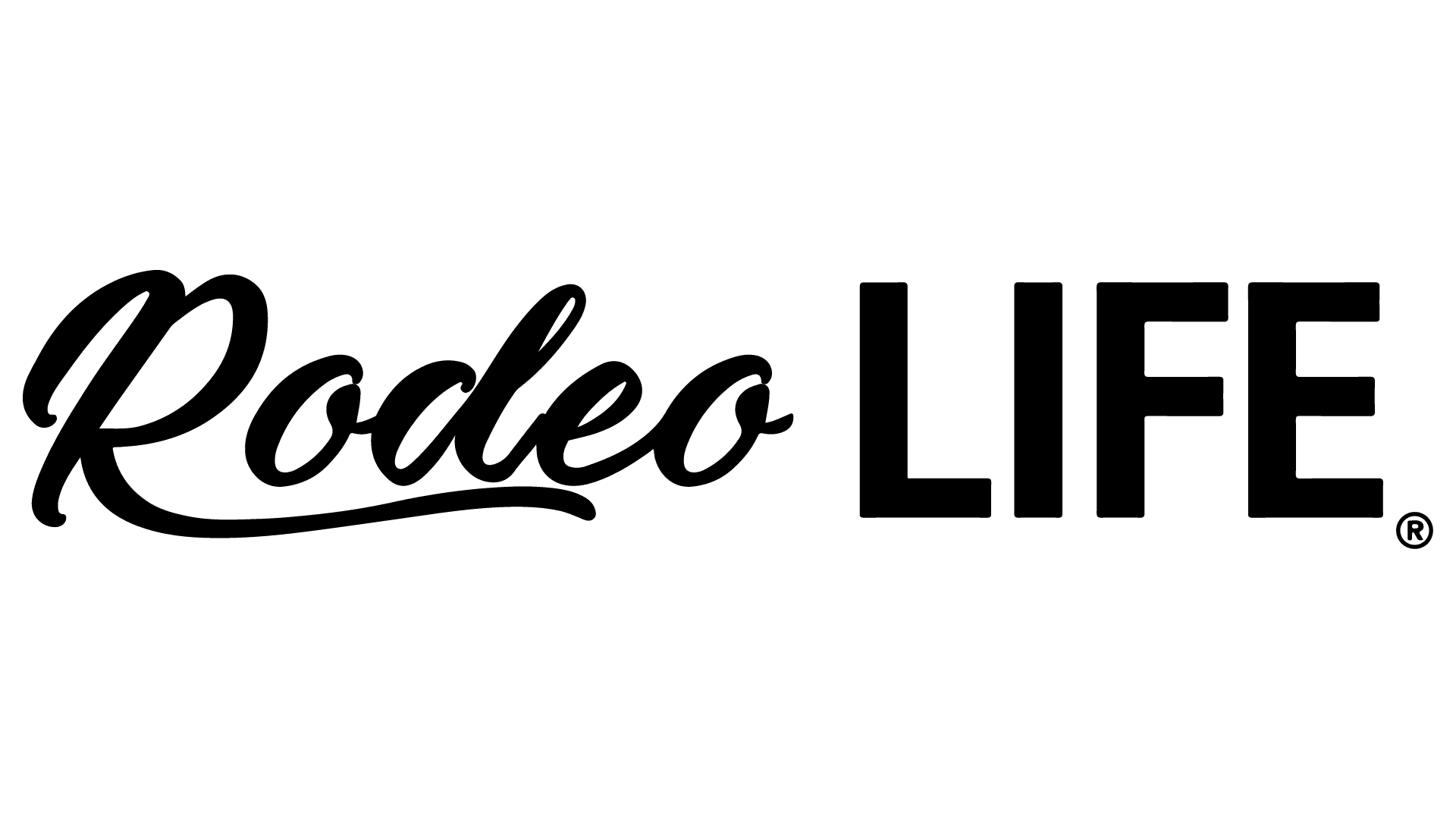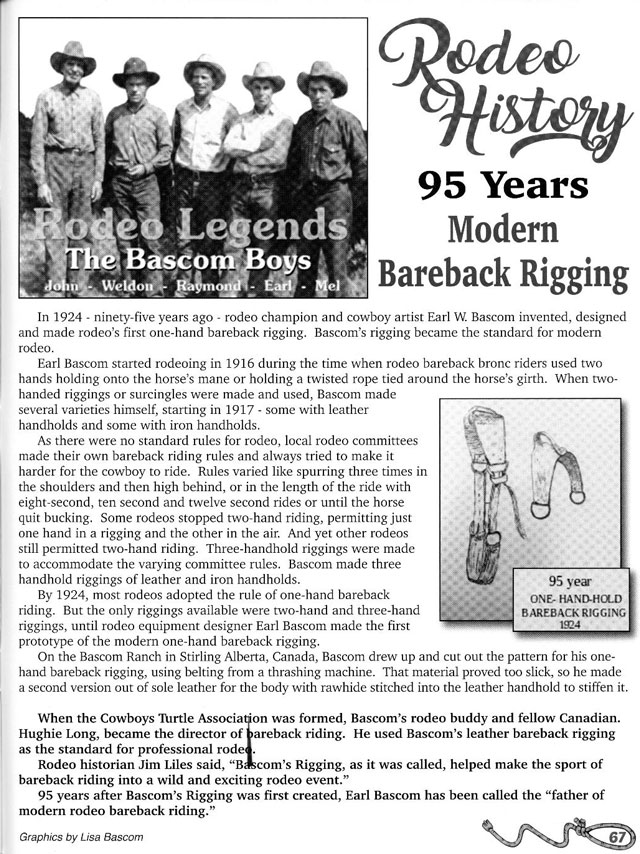Rodeo as we know it today had it’s beginnings on ranches and in small towns throughout the west. Tough horses and top riders would gather to test their abilities and a crowd would gather. The early bronc riders were plying the trade they had developed by long hours in the saddle on rank horses on ranches. When rodeos began in the early part of the 1900’s, the equipment used was generally what was used day to day on the ranch, whether riding broncs or roping cattle.
Earl Bascom, born in Vernal, Utah in 1906, moved to Alberta, Canada as a young boy with his family. After growing up cowboying on the Bar B3 ranch, he moved on to cowboy on ranches in Alberta, Saskatchewan, Montana, Utah, Oregon, Idaho, Washington, Wyoming, Colorado, California, Mississippi and Texas. He rodeoed in most of those places and made a name for himself in the rodeo world.
When Bascom started rodeoing in 1916, he built a saddle on an A-fork tree with a deep dished seat and bucking rolls. It was the style of saddle popular with the bronc riding cowboys of the time, besides being useful in ranch work.
In the early 1920’s, rodeo rules changes and the riding style of bronc riders changed with it. Spurring a horse from the points of the shoulders to the cantle board became the style of the day, and the old slick fork saddles didn’t accommodate that well. A swell forked saddle was much more desirable for the event.
While back home on the Bar B3 Ranch of his folks near Lethbridge, Alberta, Bascom created a saddle from scratch with materials he found on the ranch. The fork and swells of the saddle tree were shaped from two pieces of fence post, then bolted together. The bars of the saddle were from a wooden plank. The high backed, deep-dished cantle was the lid off of a steel oil drum, cut and shaped and bolted to the bars. The final step was to cover it all with rawhide.
The tree was then made into a saddle with rough out leather, which had been tanned on the ranch, cut to pattern and fitted to the tree. Bascom made the iron oxbow stirrups in the ranch blacksmith shop. The saddle had no fenders as Bascom felt they had no practical use in bronc riding and might bind and interfere with the spurring lick.
The most unique aspect of this newly made saddle was that it had no horn. Bascom’s vast experience as a bronc rider had taught him that a saddle horn could actually cause problems during a ride, such as hitting one in the belly and knocking the wind out of the rider, hanging the chaps belt on it, or worst of all, having the horse fall over and having it punch a hole in the chest or belly of the rider.
When Bascom competed on his newly made hornless saddle at the 1922 Cardston (Alberta) Stampede, it caused quite a sensation with everyone. It soon became popular with the bronc riders who called it a “mulee” saddle, comparing it to a cow without horns.
The hornless saddle caught on with the cowboys and before long, they were either cutting the horn off of their saddles or beating it down to bend the neck forward until the cap touched the fork of the saddle.
In 1955, Duff and Bill Severe started the Severe Brothers Saddlery in Pendleton, OR. In 1958, the famous saddle makers started producing the hornless bronc saddles for the general rodeo market, styled after the original Bascom hornless saddle.
Earl Bascom didn’t just make one big contribution to modern rodeo, however, as he went on and designed other things to make rodeo better. He designed the first side delivery bucking chute in 1916, then improved on it in 1919. In 1924 he developed the one hand bareback rigging. The high cut, rodeo style chaps were his contribution in 1926. His pioneering inventions and adaptations contributed much to the sport that we know today.
Bascom retired from the rodeo arena in 1940 as a competitor, and began the next phase of his life when he and his wife moved to California and raised their family of five children. Always interested in art, he became an internationally known cowboy artist and sculptor while ranching there.
In his rodeo career spanning the years between 1916 and 1940, Bascom competed in the rough stock events of saddle bronc riding, bareback riding, and bull riding, plus the timed events of steer decorating and steer wrestling, He also performed trick riding and was a bull fighter.
He was a member of the Cowboys Turtle Association, (now the PRCA), the Canadian Rodeo Cowboys Association (now the Canadian Pro Rodeo Association), and the National Police Rodeo Association. A many times All-Around Champion, he has been inducted into several rodeo Halls of Fame in Canada and the United States.
Next time you are at a rodeo and see the chutes, bronc saddles, bareback riggings, and chaps used in the rough stock events, you will know who developed them and made them a part of the modern rodeo world almost a century later. You will know it was Earl Bascom, cowboy, inventor, craftsman, artist, and truly, the “Father of Modern Rodeo”.
Earl Bascom passed away at the age of 89 on his ranch in Victorville, California in 1995. He lives on through rodeo today.









